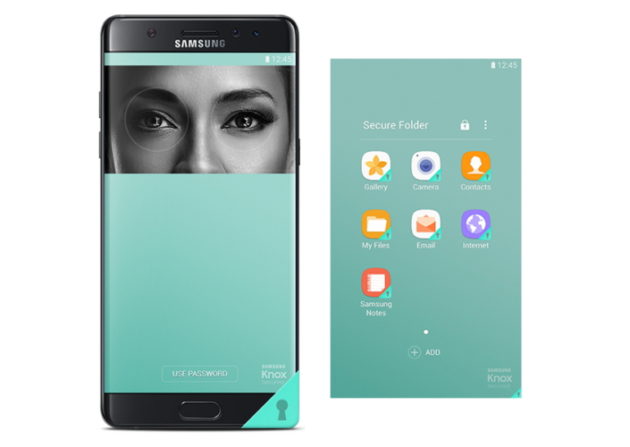Although there is talk currently of the Galaxy Note 7 for its propensity to explode a little too spontaneously, the phone from Samsung also offers many technologies in the world of Android smartphones, including the scanner of the iris, on which we focus today.

If the majority of mobile devices top of the range are now equipped with fingerprint reader, Samsung wants to expand biometric security to its smartphones. As well, the Galaxy Note 7 is equipped with a scanner iris to unlock his phone with his eye, pay with Samsung Pay, or even to access personal data.
fingerprint Sensor vs sensor iris
Samsung claims a technology that is more secure than a fingerprint reader, the fact of a reduced number of identification errors and false a more complicated system.
This security is allowed by the peculiarities of the eye and the iris in particular. The iris, not to be confused with the retina (which is located at the bottom of the eye) is the circular part of the eye that, in conjunction with the eyelid controls the amount of light coming in. We can think of the iris as a diaphragm of camera, which acts like a variable aperture to control the light captured.

How does the recognition of iris ?
in Order to be able to quickly recognize the iris, and thus validate the unlocking of the phone, it is necessary to first encode the iris data, presented in front of the smartphone. It is for this reason that there are two types of sensors, specialized on the front of the Galaxy Note 7 : an infrared LED and a camera dedicated to the capture of the iris to the sides of the camera, classic front-end.
in Order to be able to get a good iris recognition, it should be a quick scan, but precise, requiring the least amount of reflection of light on the eye. It is for this reason that the wearers of glasses can encounter problems to use the sensor of the iris. To facilitate the recognition, Samsung uses the light of the screen to illuminate the iris.

The iris stored in Knox
With the Galaxy Note 7, Samsung also took the opportunity to improve Knox, its proprietary solution to improve the security of smartphones. It is to recall a security layer developed by Samsung which is superimposed to Android, to have a double profile with an additional session, which is protected with an additional access required, acting as a ” safety deposit box “. This secure session also stores the iris recorded, which is then on the phone and not in the cloud.
Still, in terms of security, Samsung announced that the sensor of the iris and the infrared LED are not dangerous for health because they are certified by the electrotechnical commission. Even if the eye is found too close to the LED, it turns off automatically.

What’s the use for the sensor of the iris ?
because of this dual authentication, one can imagine any number of scenarios to be very practical :
- The ability to lend your smartphone to a friend or a child without access to personal data or sensitive corporate
- Use a single device to manage multiple accounts on social networks, which can be handy if you’re a Community Manager for example, to link one account to each profile, and thus get a true separation between the two
- Using the iris as a master password for all the websites whose login and password are saved, provided, however, to use the browser Samsung
- Make contactless payments with Samsung Pay
The iris for all smartphones ?
therefore, We can only hope that this kind of feature reserved for the Galaxy Note 7 will become more common on a wide range of smartphones. This feature should take more and more importance in the coming years, according to the firm ABI Research, as it is a question of 300 million smartphones equipped in 2021.
No comments:
Post a Comment